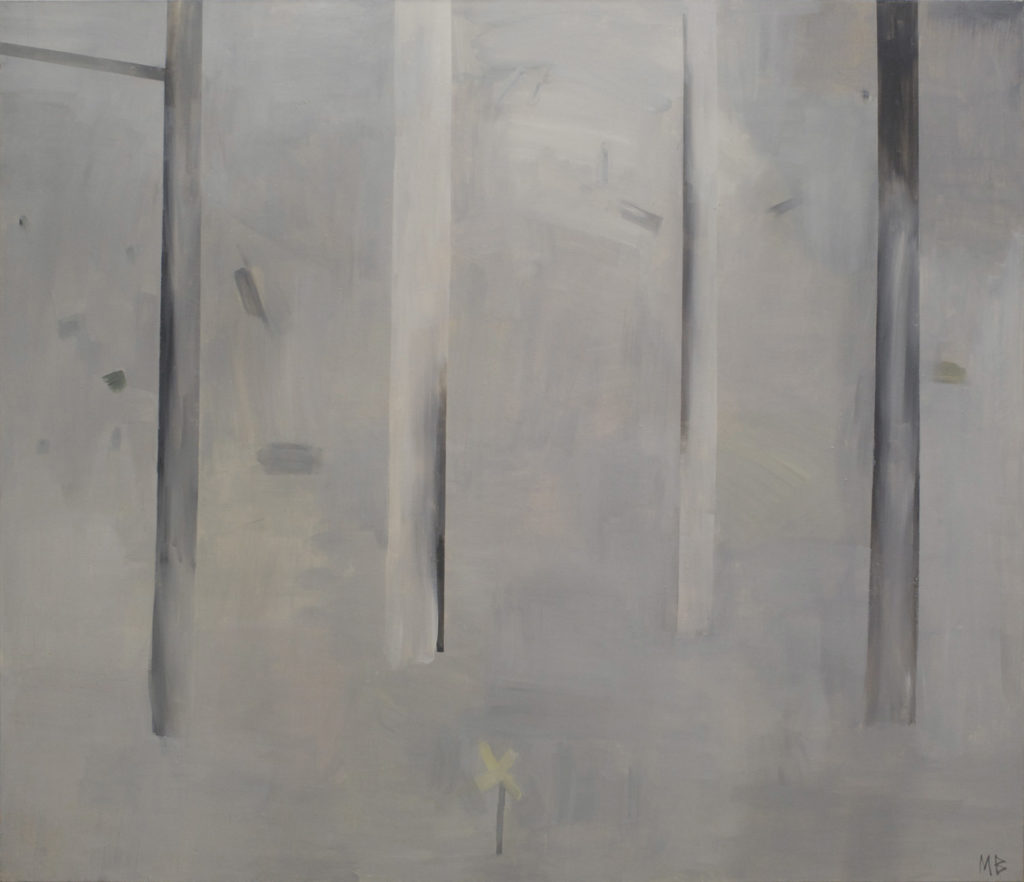Towards the Forest

Marianne Bratteli (b. 1951) is a highly experimental artist who nevertheless is seldom interested in the constantly changing trends and hypes in the art world. She works in a number of mediums and techniques; painting, assemblage, graphic art and video. It is within painting and woodcut in particular that she has made a name for herself. In brief, one can say that her pictures are characterised by a rough and expressive idiom; spontaneous and playful in impact, often with simplified, stylised figures and forms. The raw and direct mode of expression must not be confused with a lack of formal discipline, however. As with her former teacher Ludvig Eikaas – whom she highly respected – Bratteli is a distinctly demanding artist who always emphasises the formal articulation of a picture. She is a definitive master of her medium. As for the content, her works range from the slyly humorous to a genuinely felt gravity. She is equally versed in poetic references and the magical universe of fairy tales; with the fox that scampers across the ice and the princess captured in the mountain by a troll, or unvarnished post-war traumas, where a little girl – perhaps the artist herself – remains standing in a bleak and disillusioned world.
Marianne Bratteli was born and grew up in Oslo, and as the daughter of Cabinet Minister, and later Prime Minister, Trygve Bratteli, she was given a glimpse of the darker sides of the world of adults sooner than most children. As she herself put it: “Through father’s experiences in German concentration camps, which was never explained to me in a way that a child could understand, I had an impression of the evil that we humans are capable of inflicting upon each other in certain situations – it was as though the smell of gunpowder and the screams of the tortured and dead people reached me all the way into the children’s nursery. So as a girl, I grew up more sombre and grave than my girlfriends.” Despite this sinister backdrop, Bratteli’s works – which are often related to childhood experiences and memories – also encompass a genuine and forthright belief in the forces of good in humanity and in art.
The atmosphere in Towards the Forest is enigmatic and ambiguous. Four slender tree trunks divide the picture plane into vertical segments. The colour scheme is based on values; nuances of grey and white. Both the title and the motif are reminiscent of Edvard Munch’s imagery, yet while his Towards the Forest (1897) and Summer Night. The Voice (1896) deal with the life of the human soul and man’s relationship to the surrounding nature, there are no people in Bratteli’s painting. Only the little flower in the foreground cautiously alludes to new life.
OWG